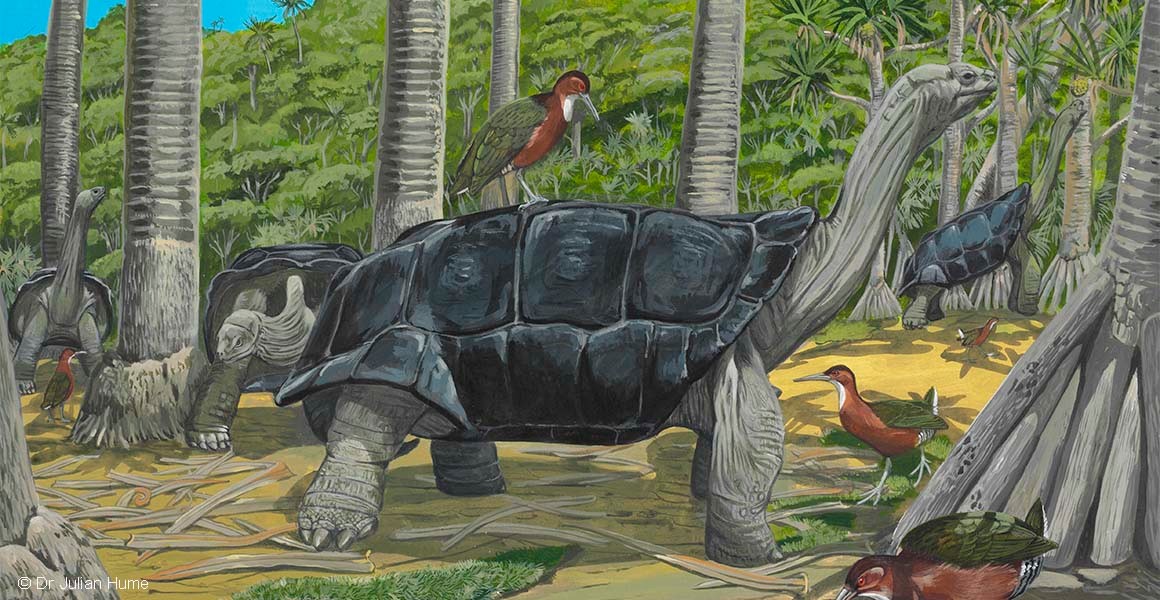Create a list of articles to read later. You will be able to access your list from any article in Discover.
You don't have any saved articles.

A study of fossils undertaken by Dr Julian Hume, Research Associate at the Natural History Museum, from the world’s second largest coral atoll.
The remote Aldrabra Atoll, situated in the Indian Ocean, has revealed how changing sea levels caused the complete disappearance of all wildlife on several occasions.
The fossil specimens which have informed the findings were originally collected in the 1980s and remained unstudied at the Smithsonian Institution in Washington, D.C.
Dr Julian Hume discovered the specimens while undertaking research for a study of recently extinct birds on Indian Ocean islands. The fossils were shipped to Portsmouth University in the UK where the rocks containing fossils were dissolved in acid, revealing exquisitely preserved bird bones inside. Among the bones were the skulls, beaks and other fragile and rare bones of both adult and juvenile birds.
The discovered bones revealed previously unknown biodiversity that had existed prior to a previous rise in sea levels.
Dr Hume says, “Among them were the remains of several birds, some not previously recorded. The fossils showed that Aldabra was once inhabited by an endemic gadfly petrel and endemic duck, herons, large petrels and shearwaters, tropicbirds, a gull and a flightless white-throated rail."
These species, including an endemic horned crocodile, disappeared from the islands during a period of high sea levels between 136,000 and 118,000 years ago and some went extinct, such as the gadfly petrel, duck and crocodile.
The fossil deposits seem to suggest that the islands were submerged on several occasions with the endemic wildlife subsequently being wiped out and then recolonising. Giant tortoises in particular appear to have recolonised Aldabra from Madagascar at least three times after these submergence events, presumably due to their ability to cover large expanses of open ocean by floating.
The research has shown that the wildlife of these low lying islands has always been at risk of extinction events due to rising sea levels. This is now of particular concern due to the risk of climate change.
Dr Hume explained, “This natural process has been going on for millennia, but it is extremely rare to see it in the fossil record.
“Unfortunately, due to human activity, climate change is now happening at an unprecedented rate, and many low islands around the world may be subject to similar inundation events that occurred on Aldabra over 118,000 years ago.”
The collection of 22 islands are currently home to more than 400 endemic species, including the white-throated rail, the last surviving flightless bird in the Indian Ocean and the world’s largest population of giant tortoises, comprising of more than 100,000 individuals. The remote location of the atoll means it has remained largely untouched, making one of the most important places in the world for scientists studying evolutionary processes.
The study, ‘A terrestrial vertebrate palaeontological review of Aldabra Atoll, Aldabra Group, Seychelles,’ is published in the journal PlusOne.
Images: Further images available on request.
Interview: Dr Hume is happy to be contacted for comment.
Media contact: Tel: +44 (0) 20 7942 5654/+44 (0) 7799 690151 Email: press@nhm.ac.uk
The Natural History Museum exists to inspire a love of the natural world and unlock answers to the big issues facing humanity and the planet. It is a world-leading science research centre, and through its unique collection and unrivalled expertise it is tackling issues such as food security, eradicating diseases and managing resource scarcity. The Natural History Museum is the most visited natural history museum in Europe and the top science attraction in the UK; we welcome more than 4.5 million visitors each year and our website receives over 500,000 unique visitors a month. People come from around the world to enjoy our galleries and events and engage both in-person and online with our science and educational activities through innovative programmes and citizen science projects.